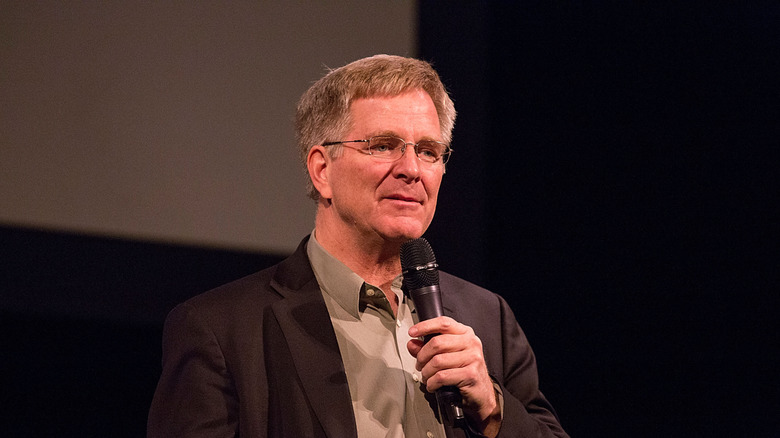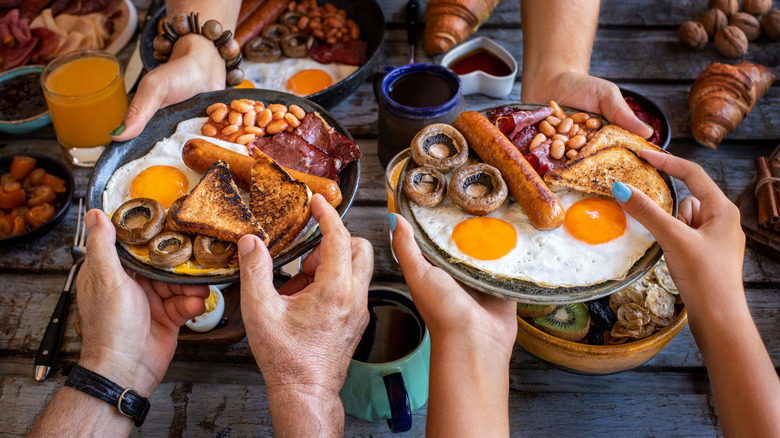The Worst Mistake To Make When Dining In Europe, According To Rick Steves
If you're planning a European trip, Rick Steves is definitely the expert with advice that will help you build the best vacation. From tips on how to snag cheaper drinks to suggestions for saving money, he has European travel down to a fine art. And when it comes to his dining rules across the continent, he has one solid piece of advice about how to start your day: Skip the hotel breakfast.
For Steves, the benefits of missing the morning meal at the hotel are twofold. First, it's often not cost-effective. While some spots may offer a wide array of interesting options, many others aren't as generous. So if you're staying close to an area where you can easily pop into a shop to grab your first meal of the day, it will probably be a more frugal option than gambling with the hotel offerings. The other reason you might want to hit up a local café or bakery is for the experience. After all, hotels can only offer so much character and you're already spending a decent amount of time there — getting out and exploring will offer a better picture of the area you're visiting. Plus, you can dive into different meals each day as opposed to sampling the same menu each morning.
Breakfast in Europe varies from place to place
Your morning meal may look very different depending on what part of Europe you're traveling to. However, if your first meal of the day can make or break it, you'll want to be prepared for what you might encounter. For instance, in parts of Spain, cereal is served with warm milk instead of cold, which may be slightly disorienting when you're still emerging from your morning fog. Of course, that's not the only food you may find on a Spanish breakfast menu — some staples include tomato-topped toast with olive oil, sweet churros, or omelets full of potatoes and onions.
In other countries throughout Europe, you may encounter options that range from smaller bites to large spreads. A traditional French breakfast may look somewhat simple, with breads like brioche or baguette slices paired with butter and jam or croissants. Meanwhile, a classic German breakfast can be a veritable feast. While breads may still play a starring role on some tables, you may also see cold meats, cheeses, eggs, or minced pork on the menu. Plus, there are some sweet options like Nutella or jam to top the bread, or granola. And if you're searching for a seriously substantial way to kick off the day, look no further than the U.K. for a full English breakfast with eggs and bacon, fried bread or toast, sausages, and veggies like grilled tomatoes and fried mushrooms — all potentially accompanied by potatoes and cabbage, black pudding, and baked beans.


